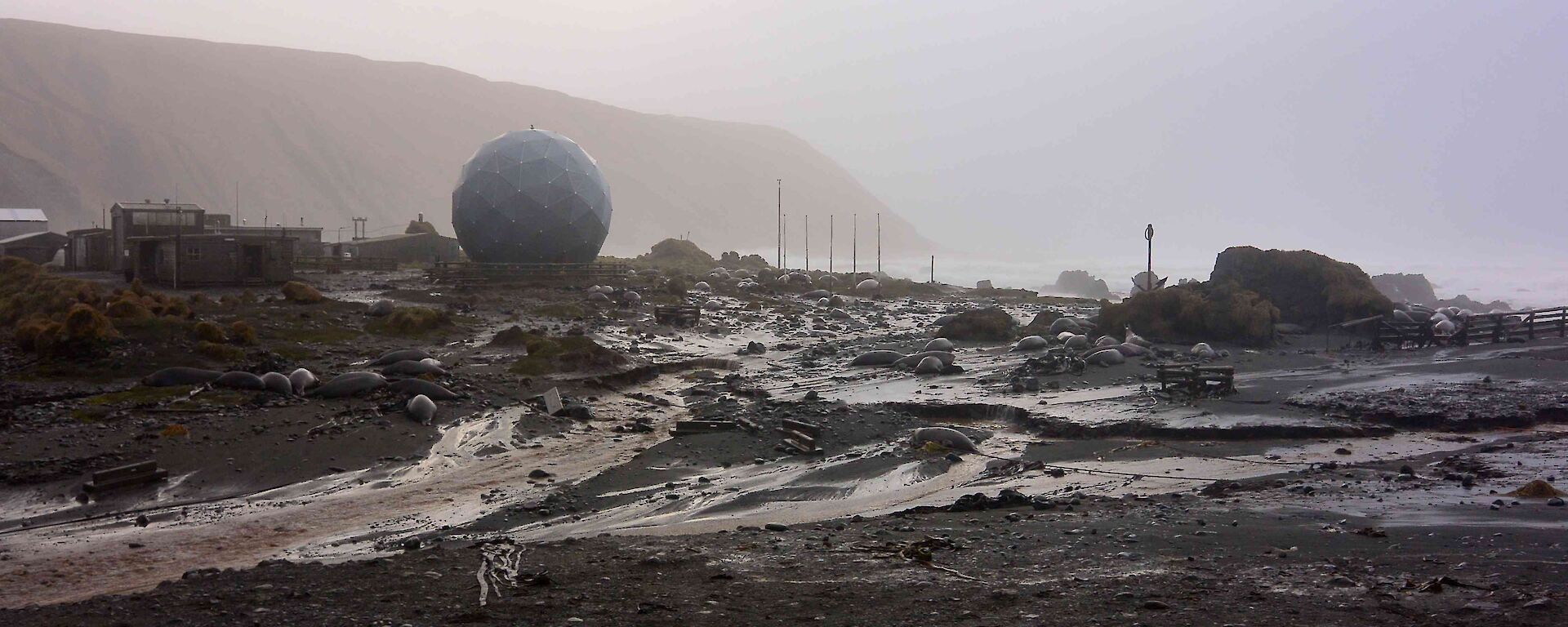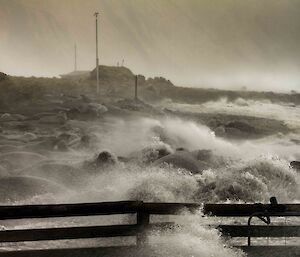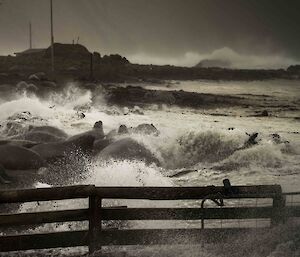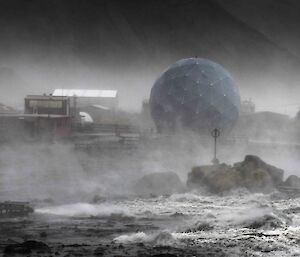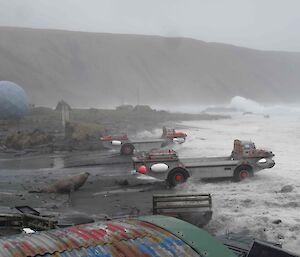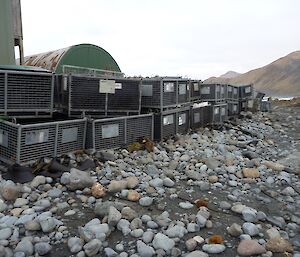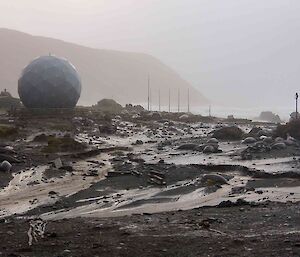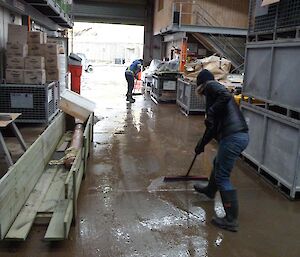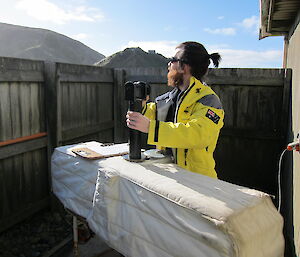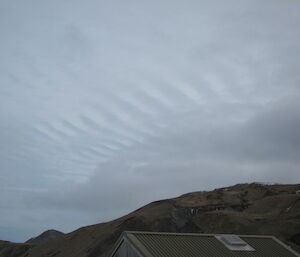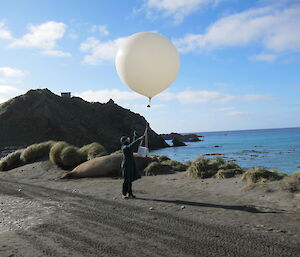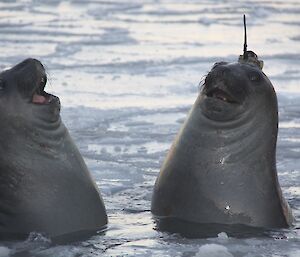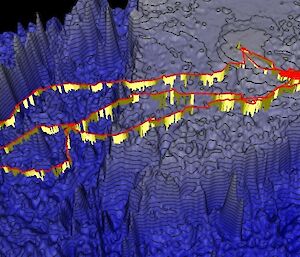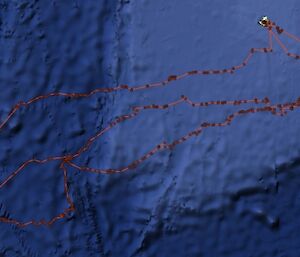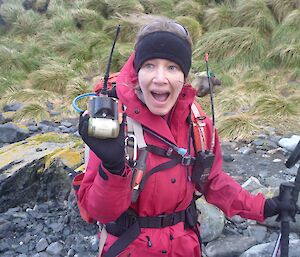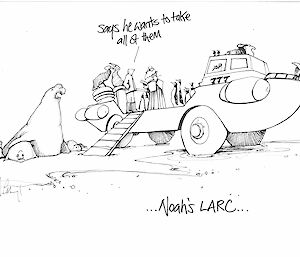Over the weekend Macquarie Island was lashed by winds and surf resulting from a deep low pressure system which passed immediately to our south.
The Bureau of Meteorology (BOM) Regional Forecast Centre contacted us on Thursday to advise that they were tracking a system that was shaping up to result in high winds and swells due to arrive on Saturday. This storm was predicted to be stronger than an event earlier in the year which inundated the isthmus.
Having endured the big storm back in July, we all had a good idea of how much damage this storm could potentially cause. Throughout Thursday and Friday we set about securing the station as best we could. Cage pallets and containers were moved to the rear of station and lashed to the fence, marine debris bulker bags were processed and packed into pallets, buildings were secured, everything at floor level in the store was elevated, and vehicles were secured.
An updated forecast on Friday indicated that the predicted seas had increased to 17 metres and that winds over 55 knots would be sustained, potentially gusting to 80 knots.
With station all tidied up well in advance, we celebrated with Friday night drinks hosted fittingly by BOM. A wonderful cheese platter, and an informative presentation on sondes, sensors and all things 'Met' science was enjoyed by all before we retreated to the mess for a Friday night Indian food feast!
At 0515 on Saturday, most of us were woken by the first strong gust of the storm. The buildings shook so hard it was difficult to tell if it was the wind or an earth tremor. (Although a few on station also think that there was a tremor as well!) The weather, due to build throughout the morning, had arrived early. Gusts exceeded 60 knots, then 70 knots, topping out with a gust of 83 knots at around 0900. Around lunch time the seas began to build, lashing the west coast beaches with walls of white water. Elephant seal harems huddled on the highest ground they could find, but were soon at the mercy of the sea. Even two hours before high tide, waves were washing over the isthmus with such force that entire groups of seals, pups and even the big three tonne Beachmasters were washed away. Our concrete breakwater was washed out into the bay and the isthmus slowly eroded under the relentless force of scouring surf. One large set washed through the green store and through market square, draining down between Cumpstons Cottage and the mess. Seas of up to eight meters continued to lash the west coast, and two meter swells wrapped around the island to pound the east coast.
While the storm continued, we were concerned for the wildlife that had settled in on the beaches with pups, and for seabirds and penguins that had nested near the beaches.
The violent seas continued into the night, and our BOM observers abandoned all observations from the afternoon onwards on account of being unable to cross the isthmus.
We awoke on Sunday morning to find our isthmus washed away and the service lines linking the north and south of station exposed in a scoured gully. The helicopter pads were lifted but thankfully were held in place by the LARCs. Elephant seal pups strewn about the sand cried for their mothers, and the cow seals called out searching for pups. Amongst all of this, the Beachmasters were back to business as usual, chasing down females and trying to re-establish their harems. Giant petrels and skuas began to arrive en mass ready to take advantage of the pups that didn’t make it through the night.
As a station, we set about securing any loose infrastructure that needed to be dealt with immediately, and then headed to the green store to clean out the sand and mud that had been deposited as the waves washed through the building. Everything there had survived the storm, undamaged on account of being moved to high shelving.
With the initial clean up done, volunteers headed out to complete the weekly Sunday elephant seal census, expecting the worst for the harems. The teams returned with positive news that many of the seals has successfully managed to seek shelter high up in the tussock. Many new pups had even been born in the morning despite the chaos of the previous day.
This week on Macca, all thirteen of us experienced the power of the Southern Ocean and the resilience of the wildlife that forges a life down here in such harsh conditions. The impact to some species provides opportunity to others, and we are all fortunate to live and work in a place which affords us the opportunity witness the reality of the cycles of nature.

